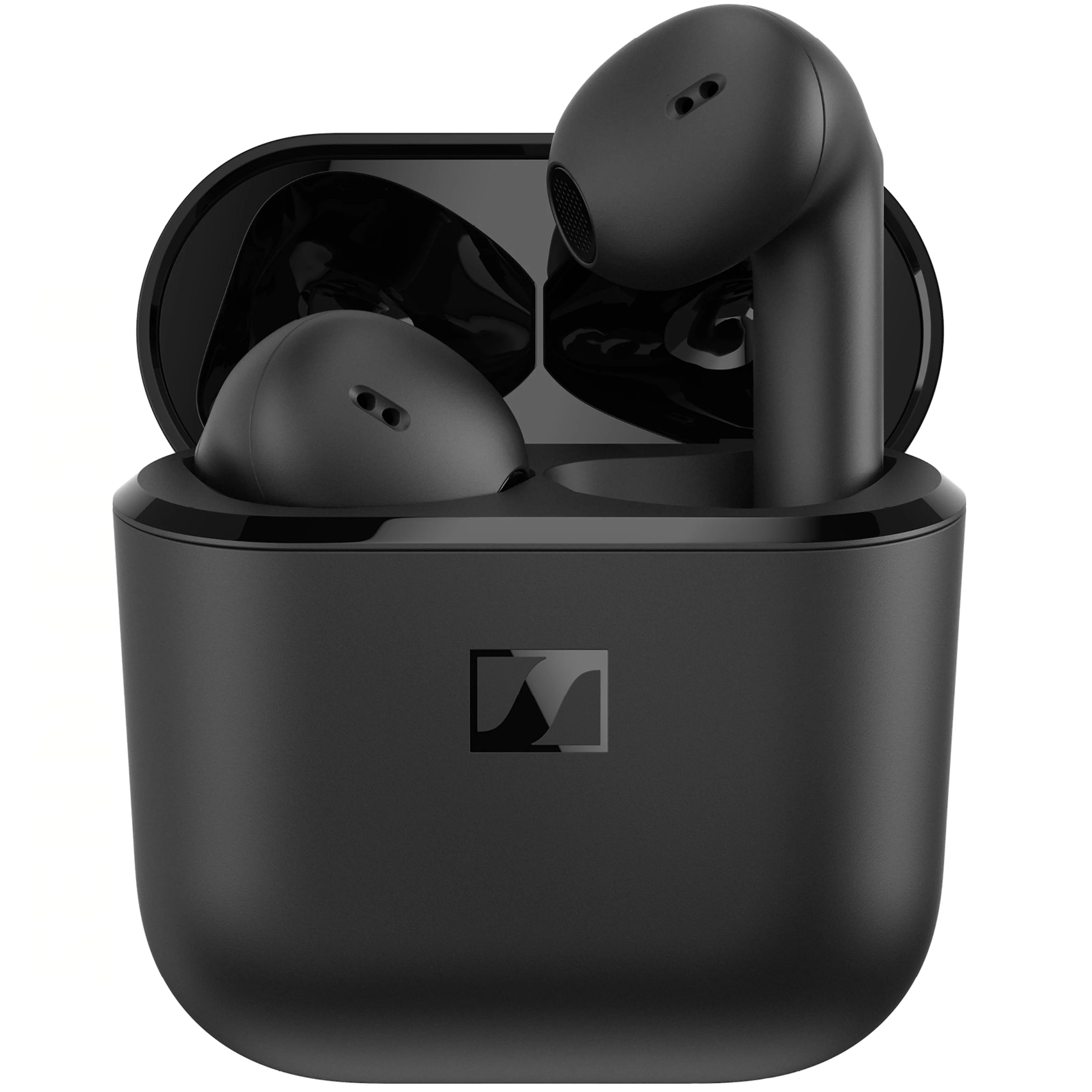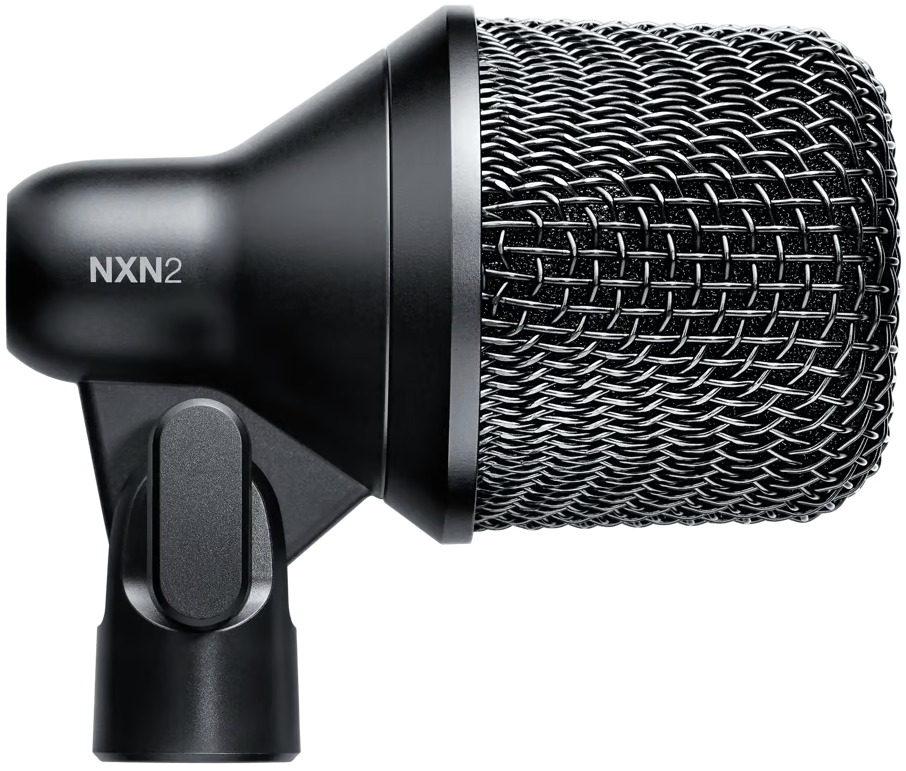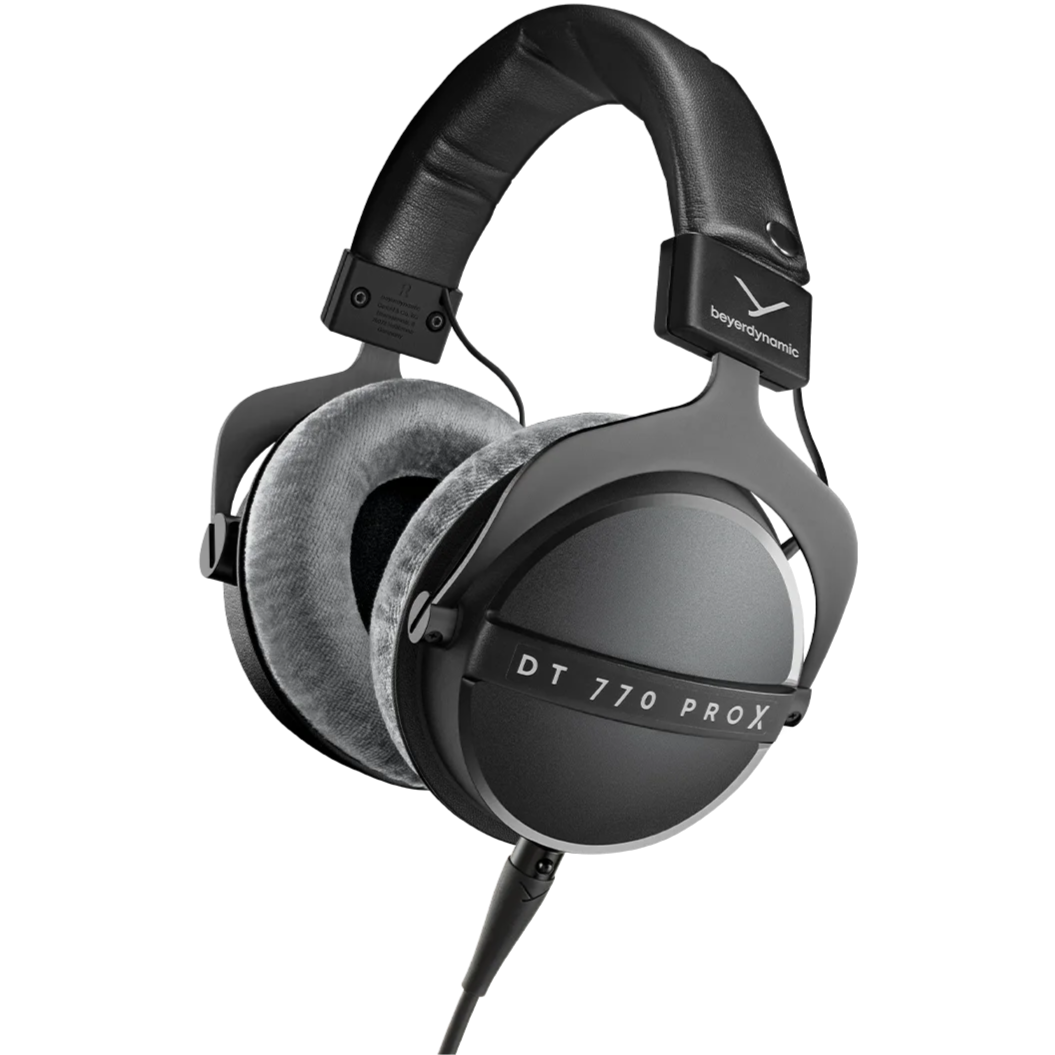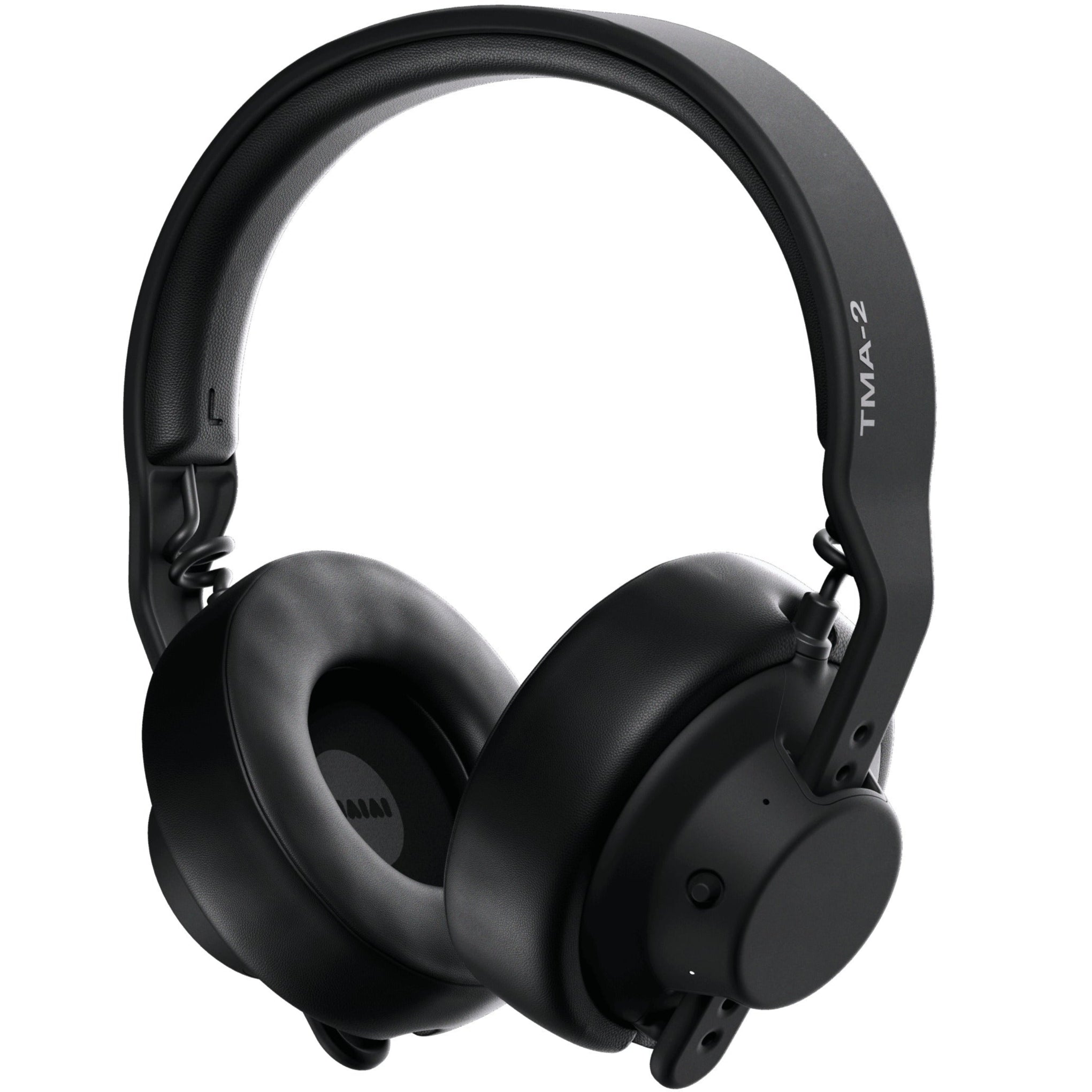Moog Muse
Moog Muse
Description
Description
The performance-oriented controls, intuitive knob per function layout, and simple yet deep menu functions create a user experience second to none. The 61-key Fatar keyboard with velocity and channel aftertouch includes a left-hand controller with pitch and mod wheels and a programmable Macro knob that makes the experience of interacting with Muse inspiring, intriguing, and innately playable. There are 16 banks of 16 patches with a broad selection of sounds from beautiful pads, organic FM plucks, massive leads, and subterranean basses. What's more, the keyboard can be split and layered allowing you to craft and play with two sounds simultaneously.
The Muse is a limitless canvas of musical exploration. The integrated arpeggiator and 64-step sequencer allow you to generate melodic ideas with compelling patterns and rhythms. Further develop your ideas with parameter recording, generative/probabilistic functions, and detailed editing of every note in the sequence. The hypnotic stereo Diffusion Delay processor is reminiscent of the golden era vintage digital rack delays with a unique and powerful set of diffusion, multitap, and filter behaviors.
Quick comparison table
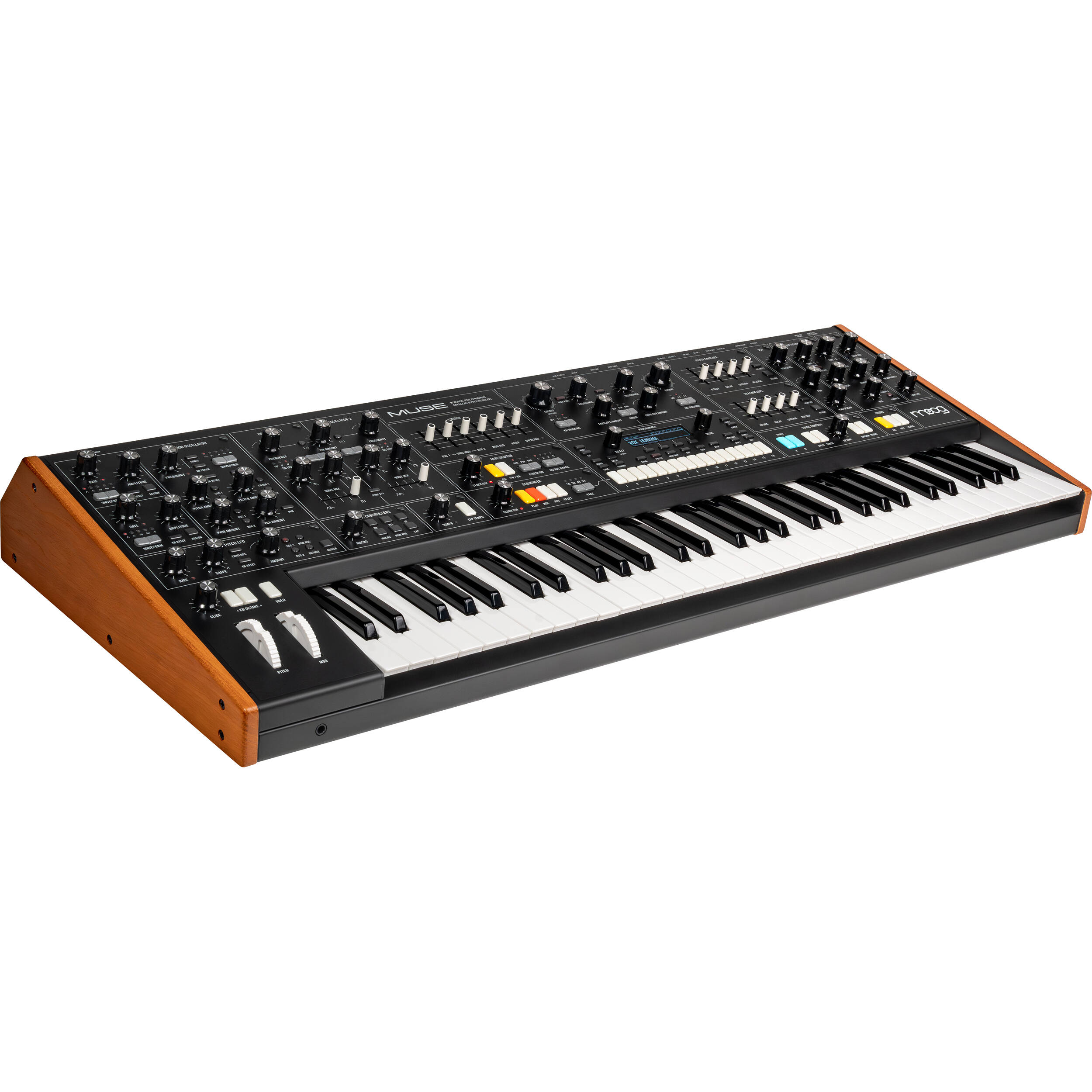
|
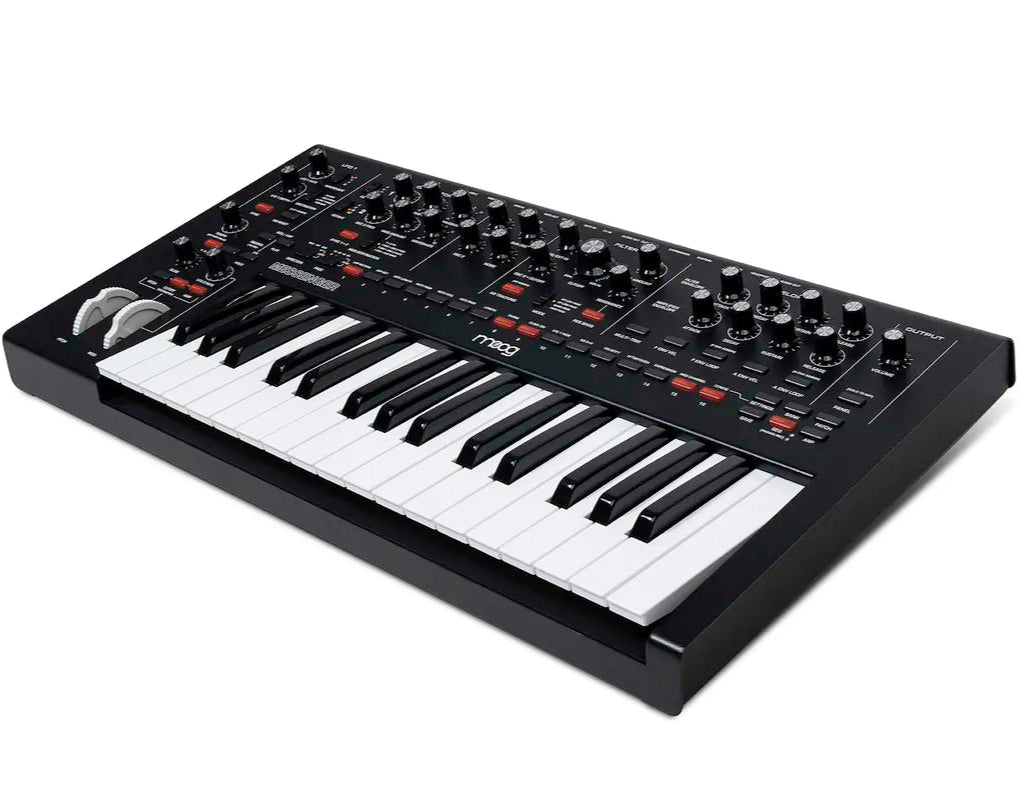
|

|

|

|

|

|
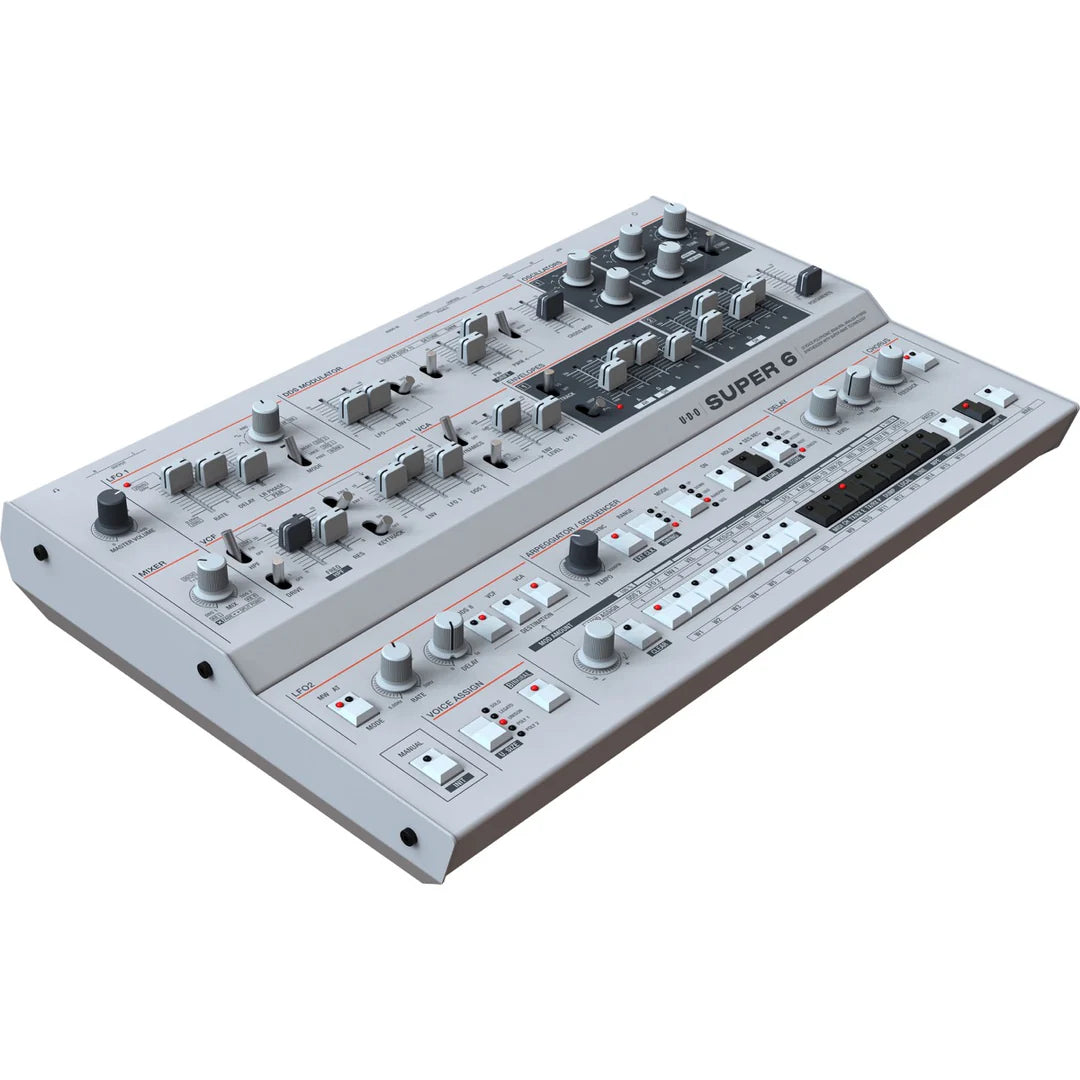
|
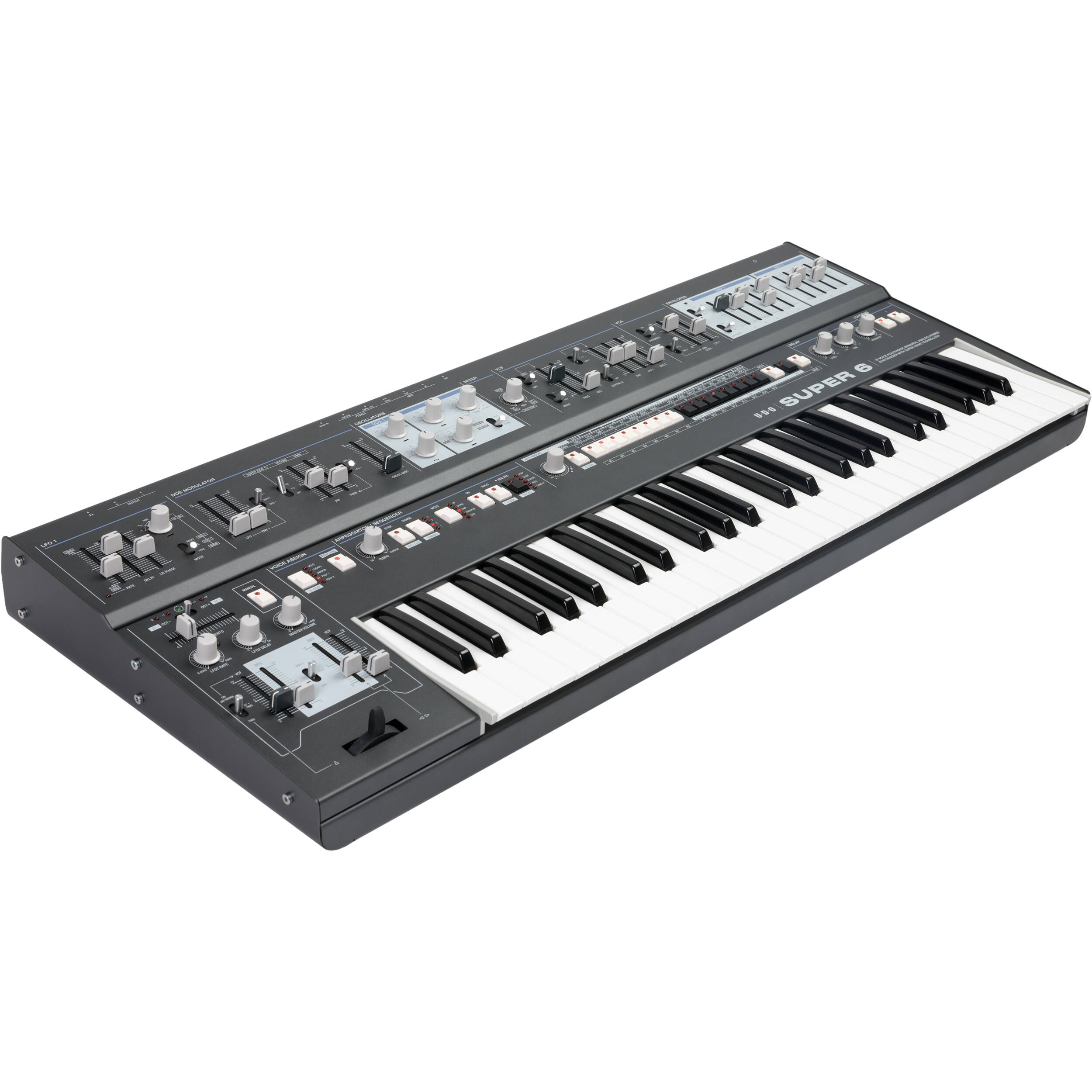
|
|
| Price |
Regular price
26.625,00 kr
Sale price
26.625,00 kr
Regular price
|
Regular price
6.461,00 kr
Sale price
6.461,00 kr
Regular price
|
Regular price
5.319,00 kr
Sale price
5.319,00 kr
Regular price
|
Regular price
14.450,00 kr
Sale price
14.450,00 kr
Regular price
|
Regular price
5.319,00 kr
Sale price
5.319,00 kr
Regular price
|
Regular price
5.319,00 kr
Sale price
5.319,00 kr
Regular price
|
Regular price
9.124,00 kr
Sale price
9.124,00 kr
Regular price
|
Regular price
15.820,00 kr
Sale price
15.820,00 kr
Regular price
|
Regular price
20.538,00 kr
Sale price
20.538,00 kr
Regular price
|
| Product variants | |||||||||
| Vendor | Moog | Moog | Moog | Moog | Moog | Moog | Moog | UDO Audio | UDO Audio |
| Type | Synthesizers | Synthesizers | Synthesizers | Synthesizers | Synthesizers | Synthesizers | Synthesizers | Synthesizers |
| Description | Designed for modern musicians, producers, and sound designers on stage or in the studio, the Moog Muse is an analog bi-timbral polyphonic synthesizer that's driven by eight analog voices, each with two VCOs, a modulation VCO, dual VCFs, and a stereo VCA. Muse represents a melting pot of classic Moog designs including Moog Voyager inspired oscillators, MF-102 Ring Modulator, CP3 Mixer, 902 VCA, and a 904a Filter. The performance-oriented controls, intuitive knob per function layout, and simple yet deep menu functions create a user experience second to none. The 61-key Fatar keyboard with velocity and channel aftertouch includes a left-hand controller with pitch and mod wheels and a programmable Macro knob that makes the experience of interacting with Muse inspiring, intriguing, and innately playable. There are 16 banks of 16 patches with a broad selection of sounds from beautiful pads, organic FM plucks, massive leads, and subterranean basses. What's more, the keyboard can be split and layered allowing you to craft and play with two sounds simultaneously. The Muse is a limitless canvas of musical exploration. The integrated arpeggiator and 64-step sequencer allow you to generate melodic ideas with compelling patterns and rhythms. Further develop your ideas with parameter recording, generative/probabilistic functions, and detailed editing of every note in the sequence. The hypnotic stereo Diffusion Delay processor is reminiscent of the golden era vintage digital rack delays with a unique and powerful set of diffusion, multitap, and filter behaviors. |
Moog Messenger - Compact Monophonic Analog SynthesizerShort DescriptionUnlock your creative potential with the Moog Messenger synthesizer. This compact, monophonic analog synth blends the legendary Moog sound with cutting-edge features like wavefolding oscillators, a next-generation ladder filter, and a hands-on interface. Whether you're performing live or exploring sound design in the studio, the Messenger empowers you to craft unique and inspiring tones. Key Features
Customer BenefitsThis synthesizer is perfect for musicians of all levels, from beginners to seasoned sound designers. Quickly create and save your favorite patches with 256 preset locations or explore a wide range of expertly designed factory sounds. The Moog Messenger invites endless creative possibilities with unique modulation and sequencing tools, all packed into a compact yet exceptionally durable design that’s ready to go wherever inspiration takes you. What's in the Box
Quick Specs
Order the Moog Messenger synthesizer today and elevate your sound design with the perfect blend of classic analog warmth and modern features. Whether live on stage or deep in studio experimentation, this synth delivers unparalleled creative possibilities. |
Powerful Synth Engine Powered by an easy-to-use analogue sequencer, DFAM’s emotive sound begins with a white noise generator and two wide-range analog oscillators - effortlessly transitioning between rhythmic pulsations, resounding bass and resonant bells in an instant. DFAM’s distinctive voice is then shaped by a classic Moog Ladder filter with two selectable modes: Low Pass mode imparts impact and dimension to each sound it touches, while High Pass mode opens the door to naturally expressive strikes, spikes and clangorous accentuations. 3 dedicated analog envelopes work dynamically with the sequencer to ensure that tribal toms breathe, industrial impacts evolve, and sonic chaos can be created or subdued at the turn of a knob. Mother-Rack-Ready Paired with a Mother-32, DFAM offers an incredible world of pounding analogue rhythm and bass that could drive the heart of a stunning improvised live performance rig, or add hands-on inspiration to any studio setup. It is also can be configured as a traditional two-oscillator Moog lead and bass synthesizer, and, as with Mother-32 - removed from the included chassis for use in Eurorack systems. Each DFAM ships with a package of Moog patch cables that unlock access to the 24-point modular patchbay. Use it to create new sounds or bizarre behaviors, synchronize an unlimited number of DFAM and Mother-32 units together, or fully integrate your analogue instrument into a modular Eurorack production environment. Through exploration and experimentation, the sonic potential of the Moog DFAM begins to unfold. The Moog DFAM (Drummer From Another Mother) is the first percussive, modular synth in their acclaimed Mother Series. Designed for fun and intuitive analogue rhythm pattern creation, DFAM is the perfect accompaniment to any Moog Mother Modular system, or as a standalone drum synth for music production in any studio setup. Unlike a 'drum machine', with pre-set tones and sequencer, Moog DFAM melds these concepts into one - it can seamlessly shift from producing bass drums to snares, 'hats' to bass tones, to wild effects and to lead sounds, all on the same machine from moment to moment, simply depending on how you configure the onboard sequencers and patch settings! There is no other standalone product on the market like it. |
Based on the revered Moog Sub 37, this re-design has been built following feedback and requests from Sub 37 users, as well as carrying out their own research and development. Equipped with all the same features and functions as its predecessor, the Subsequent 37 also incorporates new assignable outputs, as well as a completely overhauled sound engine, and much more. Retaining the 37-note keyboard, the Subsequent 37's keys can be used in either Mono or Duo modes, and feature a rapid lightweight action, with Aftertouch capabilities. With two powerful analog oscillators at its core, the Moog Subsequent 37 delivers a huge array of astounding and rich sounds. Re-Designed Sound Engine & Twice The Headroom The Subsequent 37 has been overhauled with the addition of a newly designed sound engine. The synthesizer boasts a huge 256 presets which are efficiently arranged in 16 banks consisting of 16 patches. These can be directly accessed via the vibrant LED display, and range from classic synthesizer sounds to the more modern and contemporary examples, as well as a selection of pads and more. Re-designed from the ground up, the new sound engine delivers rich, defined low-end and crisp highs. Providing a truly huge sound, the Subsequent 37 also features a reworked Multidrive section with the ability to add a wide range of flexible dirt and grit to your sound. On top of a revamped sound engine, the Subsequent's mixer section also features twice the headroom of its predecessor. This enables you to create a huge range of beautiful clean sounds in both performance modes, greatly increasing the versatility and sonic palette of the synthesizer. The synth's Ladder filter's gain-staging has also been redesigned with a new shape, which results in boosting harmonic saturation, as well as analog compression. This gives you a much deeper, richer low-end. Combined with the revamped sound engine and Multidrive circuit, the new sonic capabilities of the Subsequent 37 open up the flexibility of the synthesizer for you to take full advantage of. Additional Of Assignable Outputs The Subsequent 37 features a collection of additional outputs which can be assigned, which is something its predecessor did not have. With a total of four CV outputs as well as two gate outputs, the assignable outs enable you to send data from the Subsequent 37 to external devices such as modular systems, other synthesizers, MIDI interfaces, and many more. Advanced Control Options The front panel of the Moog Subsequent 37 is equipped with 40 control knobs and 74 switches, giving you the ability to control every single part of your sound. Each control knob gives you accurate authority over the parameters that they control, enabling you to sculpt the sound you want with incredible precision. The Subsequent 37 boasts Moog's highly regarded filter, controllable via the large filter cutoff knob. The size and design of the cutoff control gives you un-obstructed access to one of the key features of the synth, allowing you to make changes quickly and easily at any time. The unit is also equipped with two flexible modulation buses, allowing you to add interesting movement and depth to your sound. The Moog Subsequent 37 Synthesizer delivers exceptional Moog sound and build quality in the form of this 2-note paraphonic analog synthesizer. Based on the revered and award-winning design of one of Moog's most prestigious modern synthesizers, the Subsequent 37 Tribute Edition is equipped with an intuitive control panel featuring 74 tactile switches and 40 control knobs. With a reputation for astounding sound, Moog have implemented a wide array of sound-sculpting tools and functions for creating the sound that's in your head. Whilst maintaining the charm and power of its predecessor, the Moog Subsequent 37 Tribute Edition has been expertly crafted using feedback and requests from Sub 37 users, as well as their incredible wealth of knowledge from their years in the industry. This new and improved synthesizer is the ultimate sound-design tool with improved headroom and a whole host of additional features. New & Improved Design |
Two analog VCOs and four subharmonic oscillators are combined for a total of six powerful sound sources. Each subharmonic tone is mathematically derived from one of the two main VCOs, offering well-defined chord shapes with a beautifully coherent quality. The onboard quantization provides perfect intervals every time with selections for multiple tuning systems. Choose between contemporary equal temperament settings, intervals of just intonation, or the unlimited freedom of no quantization at all. Additionally, two 4-step sequencers animate the chord shapes. Each sequencer is clocked by any or all of four Rhythm Generators that output mathematical divisions of the master tempo. Layer multiple Rhythm Generators on top of each other to create complex polyrhythms and discover inspiring new patterns and styles. Delve into Subharmonicon's dual Envelope Generators, Moog Ladder Filter, and analog VCA to call up dynamic articulations ranging from lush pads and blurred edges to percussive plosives and ritualistic rhythms. The semi-modular design requires no patching to generate sound; however, the unit is equipped with a 32-point patchbay, which lends itself to tactile exploration and experimentation. There is a 3.5mm MIDI input that works with the included adapter to provide synchronization to MIDI signals. The Subharmonicon is fully compatible with Eurorack systems (60 HP) and ships with a power supply. Building upon the success of the Mother 32 and DFAM semi-modular synthesizers, the Moog Subharmonicon is a Eurorack-compatible, semi-modular polyrhythmic analog synthesizer designed for the exploration of sequences that unfold and evolve over time, spiraling through 6-tone subharmonic chords and organic polyrhythms, making it well suited for producers and musicians working in the studio or performing onstage. The sound engine is based on the music making approach developed during the 1930s and 1940s, where Joseph Schillinger's avant-algorithmic concepts leverage music and math to create complex sounds and patterns using an easy-to-use interface. |
The Mother-32 from Moog is a semi-modular analog synthesizer with an integrated 32-step sequencer and 32-point patchbay with Eurorack compatibility. The semi-modular design is pre-wired internally for making sounds without patch cables and is fully controllable via MIDI. The single oscillator is switchable between saw and square waveforms and offers pulse width modulation. The on-board LFO is capable of generating frequencies at audio levels and can be routed to the VCO, pulse width, filter cutoff. The classic 24 dB ladder filter is switchable between low-pass and high-pass with controls for cutoff and resonance. The envelope offers controls for attack and decay with sustain available via toggle switch., Moog's Mother-32 is a new, yet familiar for all analog lovers, analog synthesizer with Eurorack compatibility, an integrated 32-step sequencer and a 32-point patchbay. What makes it stand out of the crowd (aside the fact that it is made by Moog) is its powerful vintage voice, signature Moog ladder filters (high-pass and low-pass: 20Hz - 20kHz), a voltage-controlled 32-step sequencer, a MIDI input for external control and a 32-point 3.5mm patch bay for extended sound creation capabilities. Semi-modular design can also make sounds without patch cables and be fully controllable via MIDI. The single oscillator can also be switched between square and saw waveforms whilst also having pulse width modulation capabilities. The LFO-generated frequencies can be routed to the VCO, pulse width and filter cutoff, while the classic 24 dB ladder filter is switchable between high- and low-pass with controls for resonance and cutoff. Finally, the envelope offers controls for attack and decay with sustain available via toggle switch. If you are looking to immerse yourself in the analog world but do not know where to start, Moog Mother-32 is the solution to your problem. The on-board sequencer offers 32 steps and can be saved into 64 sequencer preset slots. Each step can record note, glide, gate length, accent, rest, and ratchet information, while the sequencer itself can clock to MIDI and offers a global swing. The on-board 13-note keyboard can record into the sequencer in real-time or be used to step-record data. Additionally, the keyboard can transpose a running sequence in real-time. |
The on-board sequencer offers three memory slots and each sequence can retain up to 256 notes. Additional features include USB MIDI, MIDI in/out/thru via 5-pin DIN, a patchable bipolar attenuator, a patchable 4-way mult, and a 1/4" external input for processing guitars, drum machines and more. The Moog Grandmother ships with a power adapter. The Moog Grandmother is a semi-modular analog synthesizer with a 32-note Fatar keyboard, an integrated sequencer/arpeggiator, a spring reverb, and 41 patch-points compatible with the Mother-32, DFAM, and other Eurorack modules. The semi-modular design is pre-wired internally for making sounds without patch cables and is fully controllable via MIDI. Both oscillators offers selectable waveshapes and can be hard-synced, while the dedicated analog LFO features audio-rate capabilities. The classic 24 dB low-pass ladder filter provides a frequency range of 10 Hz to 20 kHz, while the patchable 1-pole high-pass filter offers additional harmonic shaping. Additionally, the Grandmother offers a standard ADSR envelope generator and is complemented by a built-in hardware spring reverb. |
Once you've sculpted optimal sounds, there's plenty more room for creativity with a sophisticated modulation matrix that supports both predefined destinations and custom mapping for a wide range of controls, as well as 24-bit stereo effects like chorus and delay for sweetening your sounds even further. Both the five-mode arpeggiator and 64-step sequencer are MIDI-syncable, and you get swing and a four-octave range. With 128 rewritable patch memory locations (64 user, 64 factory) and 16 rewritable sequence memories, you can build up a sizable library of creations for instant recall at any time. Compact, Flexible, and Ergonomic DesignThe desktop Super 6 offers flexible and immediate control, gorgeous analog sound, and top-notch build quality of the Super 6, but in a more compact package. The durable chassis is all metal and includes ergonomic features such as VESA-mount compliance, robust flip-up feet, and an optional 7 RU rack ear accessory (not included). You can even polychain two Super 6 desktop synths together for a massive 24-voice synthesizer.
Binaural Analog Signal PathIn Binaural mode, the Super 6 features a true-stereo signal path in which the instrument’s twelve voices are twinned to form six stereo super voices. Consequently, the left and right channels—and each of the player’s ears—are assigned their own complete synthesizer voice.
Parameters for both channels of each super voice may be independently controlled, facilitating the player to create rich and unique stereo images. The effect ranges from subtle to extreme stereo movement, creating an enhanced sense of spatial positioning relative to conventional monaural signal chains panned at their output. Massive Modulation Without MenusThe Super 6 delivers enormous flexibility at the player's fingertips through simple controls and a carefully designed front panel. Going deeper, there is an intuitive and immediate modulation system based around the performance area switches. For those who want to go further, every panel control can be targeted for modulation, all simultaneously and all with unique amounts.
Direct Digital OscillatorsThe oscillators in the Super 6 are digital chips based on FPGA architectures. DDS 1 (oscillator 1) utilizes a centroid oscillator with six sister oscillators that can be dephased in the stereo field, essentially providing seven free-running oscillators. DDS 2 (oscillator 2) sports a single oscillator core, and both oscillators can be coarsely detuned from 64 to 2'.
Analog VCF and VCAThe SSI2144 reprises the SSM2044 of legacy chipmaker Solid State Micro Technology, which many believe to be the best-sounding analog synthesis filter IC ever produced. Based on Dave Rossum’s patented classic improved ladder topology, the SSI2144 allows rich tonal characteristics that showcase the very best attributes of subtractive synthesis.
Versatile LFOsThe Super 6 includes two assignable, programmable LFOs that greatly enhance your sound creation possibilities. LFO 1 is freely assignable, with low- and high-frequency modes, and it can be used as a standard LFO, a third oscillator, a drone, or for audio-rate modulations.
It also features controls for delay, delay with left/right phase offset, as well as a selection of run modes (free running, reset, and one-shot) and syncing modes (arpeggiator/sequencer or external clock). LFO 2 sports rate and delay controls, selectable trigger modes, and dedicated controls for rate, pitch, and VCF/VCA modulation.
Flexible Dual EnvelopesThe envelopes are the final stage of your sound creation, and the envelopes loaded onto the Super 6 are designed to create a wide range of sounds, from mostly static classical tones to dynamic, moving soundscapes. ENV 1 sports an invertable AHDSR (attack, hold, decay, sustain, release) design, which is fully mappable through the mod matrix.
A looping mode with selectable keytracking allows ENV 1 to be used as an LFO or FM source. ENV 2 features a traditional ADSR design with multiple destinations. Arpeggiator and SequencerCreate epic grooves and patterns with the powerful onboard sequencer and arpeggiator section. The arp features five MIDI-syncable modes with a smart-hold option, while the 64-step sequencer sports programmable step, slide, accent, rest, and sequence length tracks. Clock parameters feature easily adjusted division and swing settings per layer. And you can store up to 16 patterns total.
Plethora of ConnectionsSuper 6 includes plenty of connections to support any workflow. With true-stereo output, audio in processing, and support for a diversity of pedals, you should have no problem integrating this feature-rich synth into your audio setup, whether live or in the studio.
Desktop Module Ready for PerformingWhile the desktop module omits the Fatar keyboard of its sister version, you still get plenty of support for sophisticated control via external MIDI controllers. With the right control hardware, the Super 6 Desktop will accept polyphonic aftertouch, pitch bend, and expression, as well as adjustable velocity sensitivity. Most importantly, the Super 6 supports MPE MIDI information, so you can use your expressive gesture-controlled MPE interface and map the input to any of your synth parameters.
Taking everything that made the Super 6 famous and packing it into a more compact, portable form factor, the white Super 6 Desktop Synthesizer from UDO Audio is a polyphonic, 12-voice digital-analog hybrid synth with two digital FPGA-based oscillators per voice, fed into a real analog, SSM2044-inspired VCF with a resonant 4-pole LPF and fixed linkable HPF, a fully analog VCA with selectable velocity sensitivity, and two highly versatile envelope generators. Just like the keyboard, the Super 6 Desktop can support binaural output for true-stereo audio with massive spatial potential, allowing you to create uniquely immersive and dynamic sounds with the benefits of analog warmth and digital precision. |
Once you've sculpted optimal sounds, there's plenty more room for creativity with a sophisticated modulation matrix that supports both predefined destinations and custom mapping for a wide range of controls, as well as 24-bit stereo effects like chorus and delay for sweetening your sounds even further. Both the five-mode arpeggiator and 64-step sequencer are MIDI-syncable, and you get swing and a four-octave range. With 128 rewritable patch memory locations (64 user, 64 factory) and 16 rewritable sequence memories, you can build up a sizable library of creations for instant recall at any time. Top-Notch Keyboard for Maximum ExpressionAn instrument is cherished not just for the way it sounds but for the way it feels to play. To that end, UDO has ensured that the Super 6 sports a semiweighted Fatar keyboard with 49 full-sized keys, along with adjustable velocity sensitivity and polyphonic aftertouch. You also get:
Binaural Analog Signal PathIn Binaural mode, the Super 6 features a true-stereo signal path in which the instrument’s twelve voices are twinned to form six stereo super voices. Consequently, the left and right channels—and each of the player’s ears—are assigned their own complete synthesizer voice.
Parameters for both channels of each super voice may be independently controlled, facilitating the player to create rich and unique stereo images. The effect ranges from subtle to extreme stereo movement, creating an enhanced sense of spatial positioning relative to conventional monaural signal chains panned at their output. Massive Modulation Without MenusThe Super 6 delivers enormous flexibility at the player's fingertips through simple controls and a carefully designed front panel. Going deeper, there is an intuitive and immediate modulation system based around the performance area switches. For those who want to go further, every panel control can be targeted for modulation, all simultaneously and with unique amounts.
Direct Digital OscillatorsThe oscillators in the Super 6 are digital chips based on FPGA architectures. DDS 1 (oscillator 1) utilizes a centroid oscillator with six sister oscillators that can be dephased in the stereo field, essentially providing seven free-running oscillators. DDS 2 (oscillator 2) sports a single oscillator core, and both oscillators can be coarsely detuned from 64 to 2'.
Analog VCF and VCAThe SSI2144 reprises the SSM2044 of legacy chipmaker Solid State Micro Technology, which many believe to be the best-sounding analog synthesis filter IC ever produced. Based on Dave Rossum’s patented classic improved ladder topology, the SSI2144 allows rich tonal characteristics that showcase the very best attributes of subtractive synthesis.
Versatile LFOsThe Super 6 includes two assignable, programmable LFOs that greatly enhance your sound creation possibilities. LFO 1 is freely assignable, with low- and high-frequency modes, and it can be used as a standard LFO, a third oscillator, a drone, or for audio-rate modulations.
It also features controls for delay, delay with left/right phase offset, as well as a selection of run modes (free running, reset, and one-shot) and syncing modes (arpeggiator/sequencer or external clock). LFO 2 sports rate and delay controls, selectable trigger modes, and dedicated controls for rate, pitch, and VCF/VCA modulation.
Flexible Dual EnvelopesThe envelopes are the final stage of your sound creation, and the envelopes loaded onto the Super 6 are designed to create a wide range of sounds, from mostly static classical tones to dynamic, moving soundscapes. ENV 1 sports an invertable AHDSR (attack, hold, decay, sustain, release) design, which is fully mappable through the mod matrix.
A looping mode with selectable keytracking allows ENV 1 to be used as an LFO or FM source. ENV 2 features a traditional ADSR design with multiple destinations. Arpeggiator and SequencerCreate epic grooves and patterns with the powerful onboard sequencer and arpeggiator section. The arp features five MIDI-syncable modes with a smart-hold option, while the 64-step sequencer sports programmable step, slide, accent, rest, and sequence length tracks. Clock parameters feature easily adjusted division and swing settings per layer. And you can store up to 16 patterns total.
Plethora of ConnectionsSuper 6 includes plenty of connections to support any workflow. With true-stereo output, audio in processing, and support for a diversity of pedals, you should have no problem integrating this feature-rich synth into your audio setup, whether live or in the studio.
Solid Build QualityThe Super 6 is built to last, sporting a physical design that is both rugged and engineered to foster an immediate connection with the player. The housing is constructed from durable metal and the numerous control elements are solid, no wiggly sliders or easily broken knobs. The switches are metal too, ensuring the Super 6 will survive years of touring or heavy studio use.
Featuring an expressive 49-key Fatar keyboard with velocity and polyphonic aftertouch, the black Super 6 Synthesizer from UDO Audio is a polyphonic, 12-voice digital-analog hybrid synth with two digital FPGA-based oscillators per voice fed into a real analog SSM2044-inspired VCF with a resonant 4-pole LPF and fixed linkable HPF, a fully analog VCA with selectable velocity sensitivity, and two highly versatile envelope generators. The Super 6 synthesizer can support binaural output for true-stereo audio with massive spatial potential, allowing you to create uniquely immersive and dynamic sounds with the benefits of analog warmth and digital precision. |



















